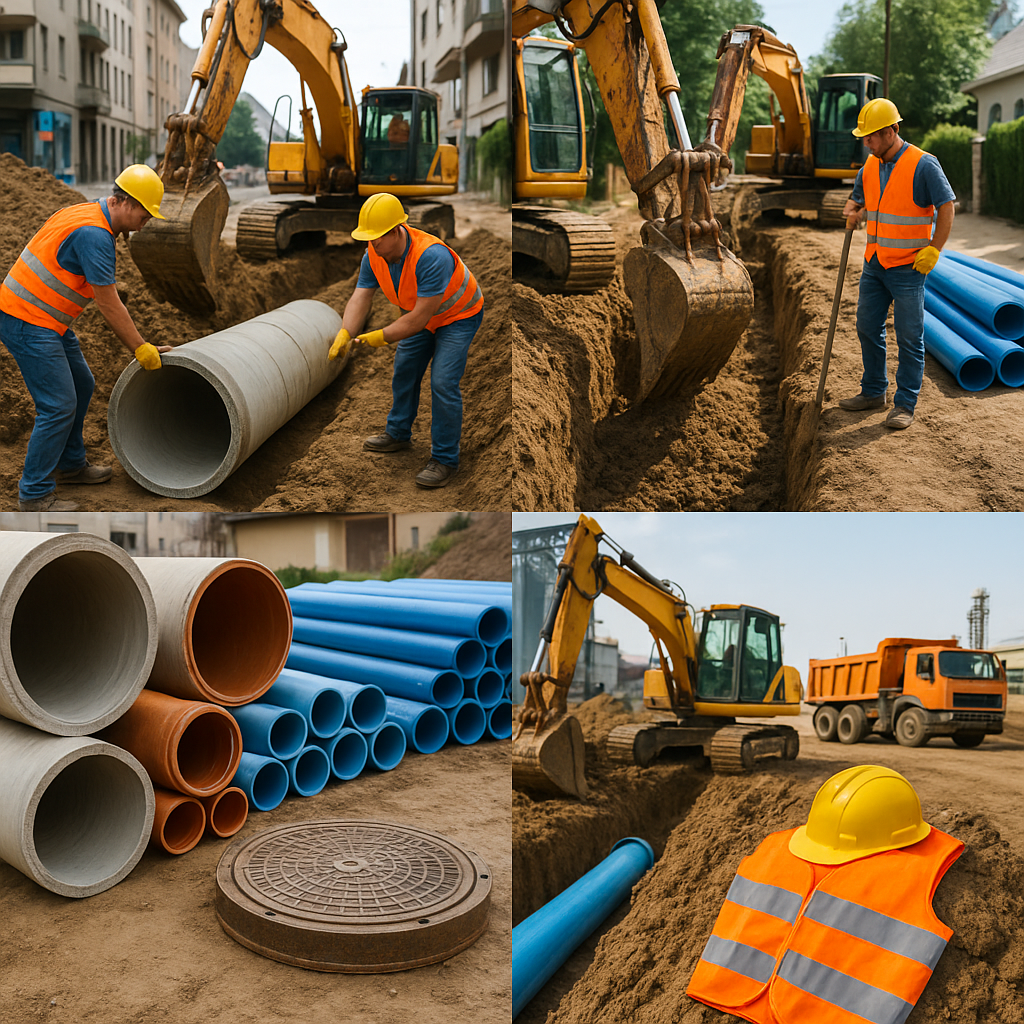Revolutionizing Pipe Material Testing in 2024
Explore advanced technologies transforming sewer pipe material testing for safer, more efficient inspections in 2024.

Revolutionizing Pipe Material Testing in 2024
Introduction
In 2024, the landscape of sewer inspection and pipe material testing is undergoing a significant transformation. With advancements in technology and a growing emphasis on smart infrastructure, professionals in the plumbing and construction industries must adapt to new methods and tools that enhance inspection accuracy, safety, and efficiency.
New Technologies and Equipment
Robotic Cameras and Sonar
Robotic cameras equipped with high-definition and 360-degree imaging capabilities are at the forefront of modern sewer inspections. These sophisticated devices, often paired with sonar technology, allow for precise internal mapping of sewer pipes. By detecting blockages, leaks, and material degradation without physical entry, these tools reduce the need for invasive excavation, thus minimizing costs and environmental impact.
Multi-Sensor Systems
Multi-sensor robotic systems are increasingly popular in the industry. By integrating cameras, LiDAR, and AI-driven deep learning models, these systems optimize the detection and classification of pipe defects. The data generated provides a comprehensive overview of the pipe's condition, allowing for more reliable material assessments.
Non-Destructive Testing
These innovative tools support non-destructive testing by generating detailed 3D models and real-time data. Professionals can now conduct thorough inspections without damaging the infrastructure, preserving the integrity of the pipes while ensuring accurate assessments.
Industry Regulations and Standards
Compliance and Documentation
Enhanced digital documentation and automated reporting systems play a crucial role in adhering to industry regulations. These technologies facilitate compliance with EPA and local environmental standards by ensuring accurate records of pipe inspections and condition monitoring.
Environmental Protection
Regulatory frameworks encourage the adoption of safer, less invasive inspection methods. Compliance with these standards not only ensures environmental protection but also boosts public trust in the industry's commitment to sustainability.
Market Trends and Business Opportunities
Market Growth
The sewer inspection systems market is projected to grow significantly, from USD 500 million in 2024 to USD 800 million by 2033. This growth is fueled by technological advancements and the integration of infrastructure with Information and Communication Technology (ICT) in smart city initiatives.
Opportunities for Innovation
Companies specializing in AI-powered inspection tools, real-time monitoring, and data analytics for pipe material testing are well-positioned to capitalize on this expanding market. The demand for predictive maintenance and smart infrastructure management is driving innovation and creating new business opportunities.
Safety Protocols and Best Practices
Enhanced Worker Safety
Remote inspections using robotic cameras and sensors significantly reduce worker exposure to hazardous environments, such as confined spaces and toxic gases. This approach enhances occupational safety and ensures compliance with safety standards.
Pre-Entry Hazard Identification
Portable gas detectors and real-time video feeds allow for pre-entry hazard identification, further reducing risks associated with traditional inspection methods. Digital logs and safety tracking systems ensure adherence to safety protocols during inspections.
Recent Case Studies or Success Stories
The adoption of AI-enhanced multi-sensor robotic systems and sonar mapping has demonstrated improved defect detection accuracy and operational efficiency. These advancements have led to reduced repair costs and downtime, highlighting the practical benefits of incorporating technology into pipe material testing.
Cost and Pricing Information
Long-Term Cost Savings
While the initial investment in advanced technologies can be high, the long-term cost savings are substantial. By minimizing excavation, enabling targeted repairs, and lowering labor risks, these tools provide a cost-effective solution for municipalities and businesses alike.
Budget Considerations
Smaller municipalities may face budget constraints, but the growing market and technological integration in smart cities are expected to drive broader adoption and cost efficiencies over time.
Conclusion
Pipe material testing in 2024 is increasingly reliant on integrated robotic and AI technologies that provide precise, non-invasive inspection capabilities. These advancements support safer, more cost-effective maintenance and regulatory compliance, reflecting a shift towards smart infrastructure management and predictive maintenance in the plumbing and sewer inspection industries.
Practical Tips
- Invest in Training: Ensure your team is trained to use new technologies effectively.
- Regular Updates: Keep your equipment updated to leverage the latest technological advancements.
- Collaborate with Tech Providers: Partner with technology providers to stay ahead in the industry.
Actionable Advice
- Implement Non-Destructive Testing: Adopt non-invasive methods to preserve infrastructure integrity.
- Enhance Safety Protocols: Use robotic systems to reduce risks associated with traditional inspections.